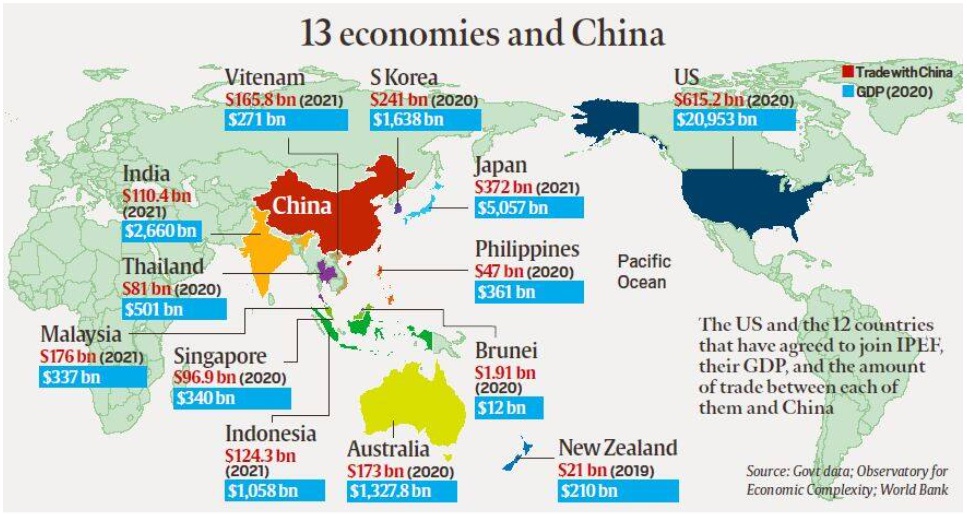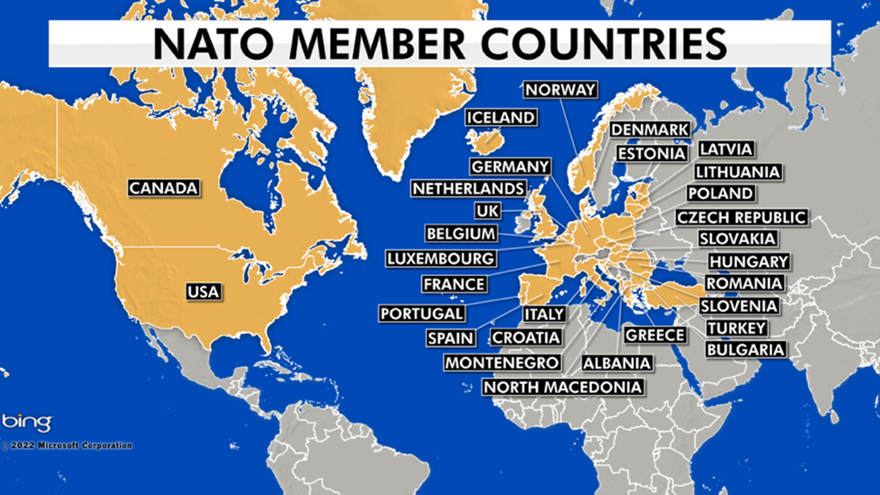Thursday, 26th May 2022
Ads codes
In News
- ASCI updates code of conduct to bring for more inclusivity in ads
About the News
- Advertising Standards Council of India (ASCI) has recently updated its advertising code for greater inclusivity in all brand communications through ads.
- The current ASCI code already required ads to not deride anyone on the basis of race, caste, creed, gender or nationality.
- The new code will also include new areas of possible discrimination or derision against any gender or sexual orientation in advertising.

What are the major highlights in new code of conducts?
- About: ASCI is a self-regulatory body of advertising industry in India.
- Intent of new code: Any advertising in India that discriminates against or mocks any gender identity, sexual orientation, body shape, age or any kind of physical or mental condition, to be considered in violation of the code set by ASCI.
- Accountability: ASCI seeks to ensure that all advertisements conform to its Code for Self-Regulation, which requires advertisements to be legal, decent, honest and truthful and not hazardous or harmful while observing fairness in competition.
- Domain: ASCI codes will be applicable to complaints across media such as Print, TV, Radio, hoardings, SMS, Emailers, Internet / website, product packaging, brochures, promotional material and point of sale material.
- Importance: As consumers are becoming increasingly concerned about unfavourable depictions of certain sections of society, new codes will help to ensure that its guidelines keep pace with the ever-evolving society.
What are the major issues?
- Unintentional fallacy: Associating sluggishness with a certain body shape happens often in advertisements for specific products for example, cooking oil or malt-based health drinks even though they do not deride the characters are being used to make a broader point about health, in a positive way.
- Majoritarian outfall: As consumers are becoming increasingly concerned about unfavourable depictions of certain sections of society, it often leads to political harassment to adv companies.
Sources:
NAS report 2021
In News
National Achievement Survey (NAS) report for the year 2021 released
About the News
- Ministry of Education has recently released the National Achievement Survey (NAS) 2021 and placed in the public domain for analysis of results and remedial action at the appropriate levels.
- The comprehensive evaluation survey is aimed at assessing the health of the school education system of India and calculating the Children’s learning competencies in Classes III, V, VIII and X.
- The findings of the survey are expected to help unravel the gaps in learning and support state/UT governments in developing long term, mid-term and short-term interventions to improve learning levels and orient on differential planning.
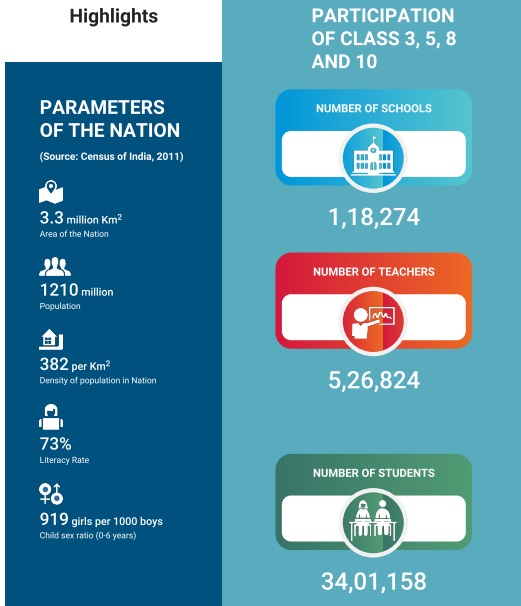
What is National Achievement Survey (NAS)?
- About: It is a pan India survey conducted for Classes III, V, VIII and X to evaluate children’s progress and learning competencies as an indicator of the efficiency of the education system, so as to take appropriate steps for remedial actions at different levels.
- Inclusive: It is based on the performance in all subjects through disaggregation by gender (female, male), Area (Rural and Urban), Management of schools (Government, Government aided and Private unaided) and Social Groups (Schedule Caste (SC), Schedule Tribe (ST), Other Backward Communities (OBC) and General.
- Diversified: The achievement tests along with the questionnaires, that is pupil questionnaire, teacher questionnaire and school questionnaire were developed and translated in 22 different languages by NCERT.
- Process: About 34 lakh students of 1.18 lakh schools in both rural and urban areas in 720 districts participated in the survey.
- Subjects covered: For Class III and V, language, Math and Environmental Science were covered while language, Math, Science and Social Science were for Class VIII and language, Math, Science, Social Science and English for Class X.
- Evaluation: While the technology platform was designed and developed by National Informatics Centre (NIC), through which the survey was managed, the survey was administered by the CBSE in one single day at the same time.
What are the major highlights of the report?
- Overall decline: The national mean score for all levels, that is, Classes III, V, VIII and X and even subjects was noted to be lower than the previous NAS of 2017.
- Subject performance: The average performance of students in all subjects declined as they were progressing from one class to another. For example, the average performance of students at the national level in Math came to 220 out of 500 in Class X.
- Language score: For the language section which was divided into two parts, modern Indian Languages and English, the score has fallen to 62 per cent in Class III, 52 per cent in Class V, 53 per cent in Class VIII.
- Rural urban divide: The survey has noted that the performance of schools located in rural areas was “significantly below” those located in urban areas and union territories.
- Caste asymmetry: The performance of Schedule Caste (SC)/Schedule Tribe (ST)/Other Backward Classes (OBC) categories was lower than students from the general category.
- Gender divide: The average performance of girls was better than that of boys and when it comes to states, Kerala, Rajasthan, Maharashtra and Punjab performed better than the national average.
Sources:
State of Jobs in 2022: ILO
In News: The ninth edition of the “world of work” report released by the International Labour Organisation (ILO), has noted that the world has lost 11.2 crore jobs in the first quarter of 2022.
About the News:
- The Report stated that after significant gains in the last quarter of 2021, the number of hours worked globally has dropped in the first quarter of 2022, to 3.8% below the employment situationbefore the pandemic.
- The fresh lockdowns in China, the conflict between Ukraine and Russia and the global rise in the food and fuel prices have been cited as the major reasons for the findings.
Highlights of the Report:
Global Scenario:
- Reduction in Working Hours:
- Both India and Lower-Middle-Income countries have experienced a deterioration of the gender gap in work hoursin the second quarter of 2020.
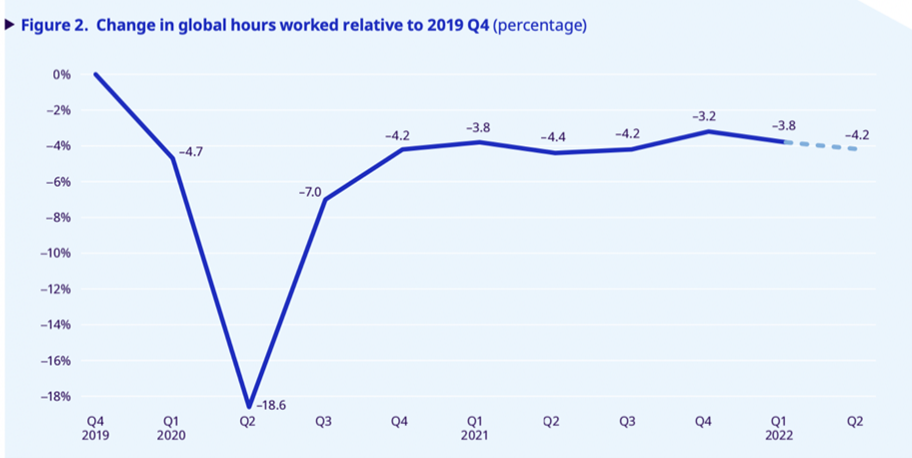
-
- However, since the initial level of hours worked by women in India was very low, the reduction in hours worked by women in India has a very weak influenceon the overall performance of the lower-middle-income countries.
- At the same time, thereduction in hours worked by men in India has a large impact on the overall performance.
- Divergence Between Richer and Poorer Economies:
- There has been a growing divergence between richer and poorer economies that continues to characterise the recovery.
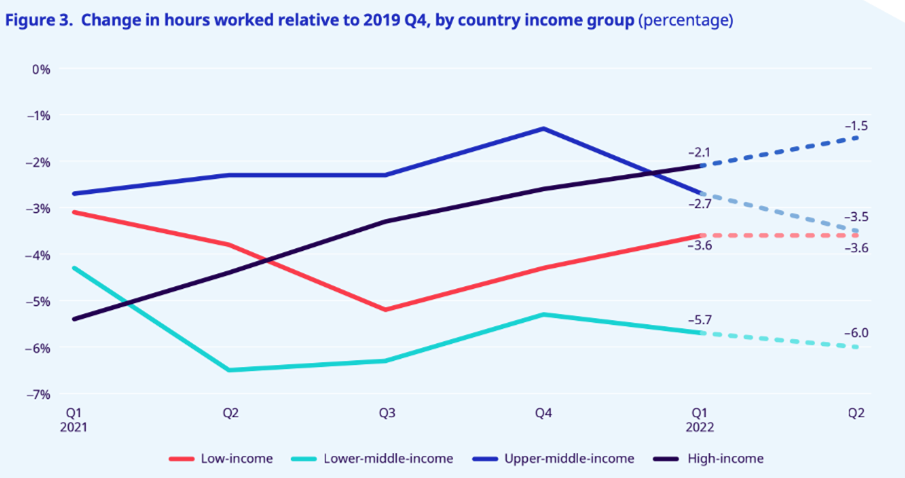
-
- Whilehigh-income countries experienced a recovery in hours worked, low- and lower-middle-income economies have suffered setbacks in the first quarter of the year (5.7% gap) when compared to the pre-crisis benchmark.
- Continuing Downward Trends in Workplace Closures:
- After a brief spike at the end of 2021 and early 2022, workplace closures are currently on a downward trend.
- While most workers still live in countries with some form of workplace restrictions, the strictest form of closure (economy-wide required closures for all but essential workplaces) has nearly disappeared.
- This is particularly evident in Europe and Central Asia, where currently 70% of workers face either only recommended closures or none at all.
- Divergence in Employment Recovery Trends:
- In line with the overall divergence in hours worked,employment levels had recovered in most high-income countries by the end of 2021, while deficits remained significant in most middle-income economies.
- The divergence in the employment-to-population ratio from the last quarter of 2019 had been mostly eliminated by the end of 2021.
- Not yet recovered Labour Incomes:
- In 2021, three out of five workers lived in countries where average annual labour incomes had not yet recovered to their level of the fourth quarter of 2019.
- Workers in low, lower-middle and upper-middle-income countries (excluding China) still faced reduced labour incomes in 2021, at rates of –1.6 %, –2.7 % and –3.7%.
- Informal employment particularly for women has been impacted more, but rebounded faster than formal employment:
- Displaced workersfrom the formal economy, seek informal employment to earn a living, while those already in informal employment remain at work.
- That is why, changes in informal employment during economic downturns is smaller than those in formal employment.
Indian Scenario:
- Loss of Jobs:
- For every 100 women at work prior to the pandemic, 3 women would have lost their job as an average through the entire period.
- However, for every 100 men, the equivalent figure has been 5.
- Thus the already existing gender imbalances in employment participation has been further exacerbated by the pandemic.
- Deterioration of the gender gap in work hours:
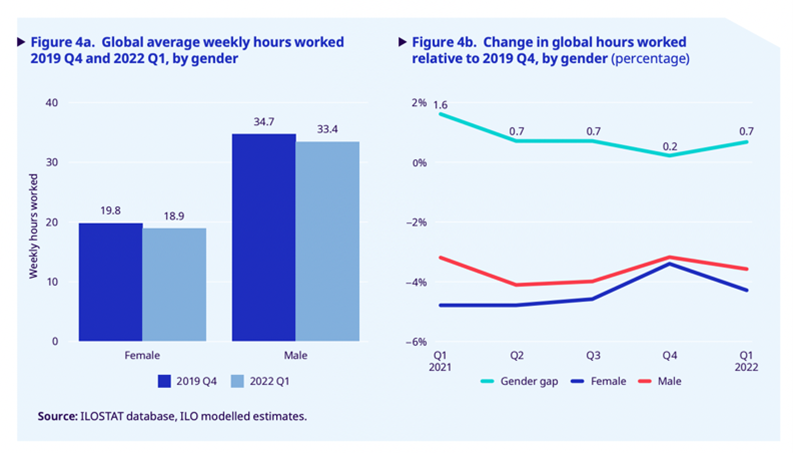
-
- India and lower-middle-income countries have seen a deterioration of gender gap in work hours in the second quarter of 2020.
- Working standards: The report has noted that there is no decent employment in India. This is because:
- Most people are contractual labourers with no social security. Thus with very less or no decent wages, purchasing power is said to decrease.
- The Code on Wagesthat was passed in 2019 is not yet implemented.
- The Wage Committeein 1948 recommends to implement a minimum wage, living wage and a decent wage which in India is not implemented due to pressure from industrialists.
Source:
- World lost 11.2 crore jobs in the first quarter of 2022: ILO
- 11.2 crore people in world lost jobs in the first quarter of 2022, says ILO
Image source:
Sally Ride
On May 26, 1951, Sally Ride was born. She was an American astronaut and the first American woman to travel into outer space. In August 1979 she completed her NASA training, obtained a pilot’s license, and became eligible for assignment as a U.S. space shuttle mission specialist.

On June 18, 1983, she became the first American woman in space while rocketing into orbit aboard the shuttle orbiter Challenger. She served on a second space mission aboard Challenger in October 1984; the crew included another woman, Ride’s childhood friend Kathryn Sullivan, who became the first American woman to walk in space.
Source:
India Thailand relations
In News
2022 marks the 75th year of diplomatic ties between India and Thailand
India Thailand relations
- Historical perspective:
- About: The end of the Cold War led India towards a strategic realignment in its foreign relations and the ASEAN region, which had not figured prominently in India’s foreign policy making, became one of the top priority areas from the early 1990s.
- Outreach: In order to share in the advantages of the booming ASEAN economies, India launched its ‘Look East’ policy in 1991.
- Coherent steps: Since 1947, India has enjoyed dynamic bilateral relations with Thailand especially through its ‘Act East’ and Thailand’s ‘Look West’ policy which have provided the outline for enhancing mutual diplomatic as well as economic collaboration in a positive direction.
- Trade and economic relations:
- Exports: From India to Thailand the exports averaged US $121.7 million from 1991 until 2022 and reached an all-time high of 5,532 million in December of 2021, thus, achieving the status of India’s fourth-largest trading partner in ASEAN.
- Free Trade Agreement (FTA): India and Thailand had signed a framework agreement for establishing an FTA in 2003 with both sides agreeing to progressively reduce the trade tariffs.
- Security: In terms of security cooperation, both nations share a strong partnership and have even entered into joint defence production.
- Science and Technology:
- Bilateral agreements: Cooperation between India and Thailand has gained momentum with the signing of Indo-Thailand, Program of Cooperation (POC) in Science and Technology which was signed in 2006 and Transfer of Technology agreement in 2002.
- Cultural cooperation:
- Time-tested ally: India-Thailand relations are rooted in shared historical, cultural and religious Buddhism in Thailand was introduced during the period of the Indian king Ashoka. Besides, Thai architecture, literature, and culture have also been influenced by Hinduism.
- Framework: The Indian Council for Cultural Relations (ICCR) has started a General Cultural Scholarship Scheme for ten Thai students to pursue their undergraduate, postgraduate and PhD studies in various courses in India.
What are the Challenges in India-Thailand relations?
- Thai-phobia: Some sectors of the Indian industry are against the Thai-based companies as they fear their interests could be hurt due to cheaper imports from Thailand.
- Slow progress: Negotiations on the FTA have not progressed in accordance with the scheduled deadlines due to a clash of interests on the issue of the “sensitive list.”
- Items in the sensitive list would not be subject to any tariff cut and both countries have their own sensitive lists.
- Delayed FTAs: Deadlocks in the finalization of the Indo-Thai FTA has led to problems such as higher import duty, strict labour laws, and cumbersome government procedures among other things. Tourism: Before the pandemic struck, India has been an important tourist destination for the Thais with millions of Thai Buddhists visiting Lumbini, Bodh Gaya, Sarnath, and Kushinagar in India for their religious trips.
- China factor: With USA weakening and shifting focus, Thailand will be forced to find alternatives especially in China which shares geographical proximity and financial deep pockets.
Opportunities for India and Thailand:
- Advantage India: India is the thirteenth largest investor in Thailand and of late has been extensively dispersed in the areas of chemicals, pharmaceuticals, textiles, nylon and so on.
- Advantage Thailand: Thailand is the second largest economy in the Association of Southeast Asian Nations (ASEAN) and the Greater Mekong Subregion (GMS). It is an upper middle-income country with a Gross Domestic Product (GDP) of US$ 546 billion in 2021.
- Market for India: For India, Thailand is a huge market for its products including gemstones, primarily diamonds and emeralds, other metal ores, iron and steel products, vegetables, medicinal and pharmaceutical products, yarn and fibres, vehicle parts and accessories etc.,
- Alternative to China: Despite the proposed change in Thailand’s Foreign Business Act and the rise of the Thai Baht against the US dollar, the United Nations Conference on Trade and Development (UNCTAD) places Thailand as East Asia’s leading alternative to China.
- Gateway to South East: The India–Myanmar–Thailand Trilateral Highway is expected to expand land connectivity through Northeast India and Indian entry to Southeast Asia.
- Gateway to south Asia: Thailand views India as the gateway to South Asia and beyond. As a result of the reduced tariff rates and new initiatives adopted by both the countries, trade between two countries increased manifold in recent years.
What more can be done?
- Removing roadblocks: Both countries should address issues regarding the tariff lines and potential trade barriers with steps such as reducing import duty charges through bilateral engagements.
- Institutional frameworks: Setting up of business forums such as India–Thai Chamber of Commerce to open opportunities for its members to work with government and non-government organisations to enhance their business.
- Outreach programmes: Organising and co-hosting conferences, summits, and business meets to reinforce India–Thailand business engagements especially for non-government organisations to enhance their business.
- Bridging gaps: India’s remarkable growth of start-ups, with many achieving unicorn statuses, presents huge opportunities for collaboration with Thailand. The emergence of ‘Aatmanirbhar Bharat’ is crucial since the latter can invest in India to reduce the supply chain gaps. The products made in India can be likewise traded by Thailand to the Indian diaspora and the world.
Way Forward
As nations worldwide recuperate from the detrimental effects of the COVID-19 pandemic, the time is ripe for India and Thailand to step up their joint engagements. There is also a need to explore and expand the potential between key sectors. The 75th year celebrations provide a perfect platform for promoting further collaborations between New Delhi and Bangkok.
India is today one of the major political, economic, and military power, whose growth trajectory would depend largely on its domestic market along with the prevalence of a relatively stable internal and external environment. This would require for India to continuously build on the relationship with nations by adding new areas of cooperation and Thailand is one such nation.
Sources:
- 75th anniversary of India–Thailand relations:
- India Thailand Economic and Commercial Relations:
- Thailand-India Relations Thrive on Shared Vision- Peace, Development and Cooperation:
Image:
Patrol passage
This is image of Asola Bhatti Wildlife Sanctuary boundary, New Delhi. The Delhi government is planning to construct a 45-km-long peripheral road alongside the Asola Bhatti Wildlife Sanctuary boundary, which will function as a patrol passage to boost security. The sanctuary is a very big and is surrounded by densely populated areas and villages and has witnessed several incidents of encroachment and trespassing on forest land. The sanctuary is situated in the South Delhi Ridge section of the Aravalli range on the Delhi-Haryana border. It is spread over an area of 6,784 acres and covers 32.71 sq km.
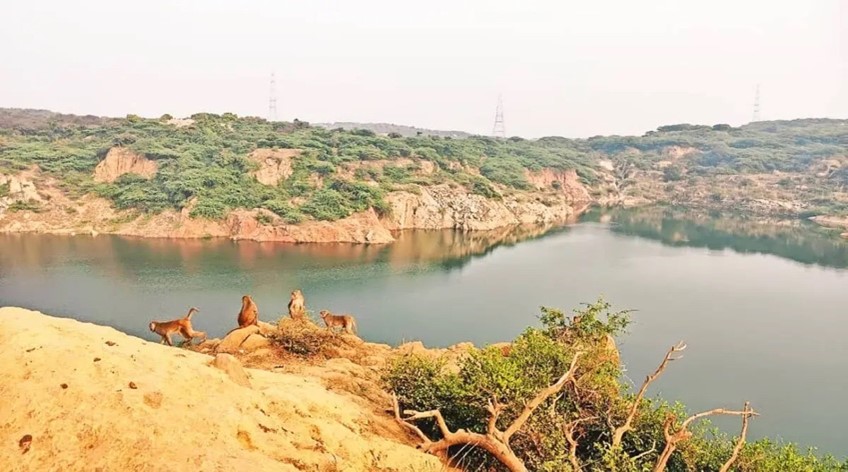
Source:
Kanheri Caves - Edukemy Current Affairs
- Context: The Kanheri caves have recently got a touristic upgrade, including an 'Interpretation centre'.
- The Kanheri Caves are a collection of rock cut monuments, prayer halls and buildings, which were created by Buddhist monks between the 2nd and 9th centuries AD.
- They who used them as living quarters or monasteries called Chiatyas and some of the larger caves that were carved for collective prayer, were known as Viharas.
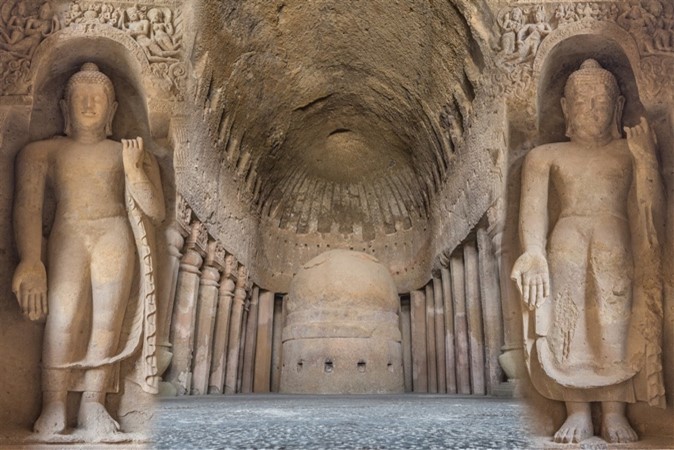
- The word ‘Kanheri’ has been derived from the Hindi word Krishnagiri or Kanha-Giri, which means Krishna’s home.
- The caves are located in Sanjay Gandhi National Park, about 20km north of Mumbai.
- A total of 109 caves were carved from the dense basalt stone of the hillside, meaning that the Kanheri site features largest number of caves carved into a single hill.
- The caves are the only site in western India to have artistic evidence of all the three vehicles of Buddhism - Hinayana, Mahayana and Vajrayana.
- During the era of the Maurya and Kushan Empire, Kanheri was used as a university centre.
- The Chinese traveller Xuanzang is said to have briefly stayed at Kanheri.
Source:
- Kanheri Caves in Mumbai are a treasure house of beauty and history
- Insider’s guide to... Kanheri Caves
- Kanheri Caves
Image source:
Cotton Council of India - Edukemy Current Affairs
- Context: The Union Government has recently announced the formation of the Cotton Council of India.
- It is set up under the chairmanship of renowned veteran cotton man Suresh Bhai Kotak to resolve the issues related to the pricing of cotton and yarn and bring tangible improvement in the sector.
- It will have representation from Textiles, Agriculture, Commerce, and Finance Ministries along with Cotton Corporation of India and Cotton Research Institute.
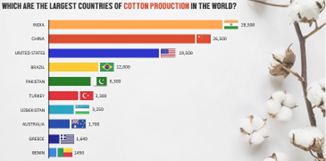
- The council will discuss, deliberate, and prepare a robust action plan for bringing out improvement in the sector.
- India has the distinction of having the largest area under cotton cultivation which is about 37% of the world area under cotton cultivation between 12.0 million hectares to 13.5 million hectares.
- India is one of the largest producer of cotton in the world accounting for about 24% of the world cotton production.
- The leading cotton producing state in India is Gujarat, followed by Maharashtra and Telangana.
- India is the only country in the world where all four cultivated species of cotton (Gossypium arboreum, G.herbaceum, G.hirsutum and G.barbadense) are grown on commercial scale.
- In 2020, India stood as the third highest exporter of raw cotton globally, accounting for about 10.2% of the total global exports.
Source:
- Centre announces formation of Cotton Council of India under Chairmanship of Suresh Bhai Kotak
- National Cotton Scenario
- Cotton Industry and Exports
- https://www.nfsm.gov.in/BriefNote/BN_Cotton.pdf
Image source:
Hokersar Bird Conservation Wetlands
- Context: The Hokersar Bird Conservation Wetlands are under threat due to Human Interference, and hence witnessing severe drop in Bird Population.
- Known as the 'Queen Wetland of Kashmir', Hokersar — also called Hokera, is located near Srinagar, Jammu and Kashmir.
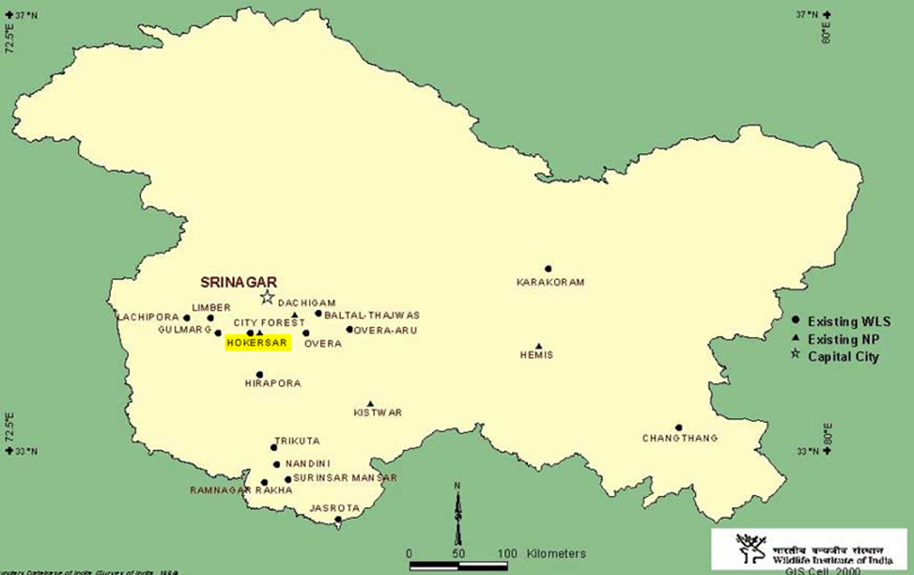
- The Physiographic division of the Wetlands, defines the location at the Northwest Himalayan biogeography province of Jammu and Kashmir, back of the snow draped Pir Panjal range in India.
- They are a natural perennial wetland contiguous to the Jhelum Basin.
- Migratory birds like mallards, greylag geese, pochards, common tails, shoveler and pintail, annually visit the region in winter, from Siberia, Central Asia and northern Europe.
- However, in the past two winters, the migratory birds visiting the wetland have dwindled because of:
(a) lll-planned dredging work in the area
(b) Dipping water levels
(c) Rapid urbanisation
(d) Increase in agricultural activities around these areas
(e) Human interference in the form of sand mining
Source:
- Kashmir’s bird paradise Hokersar wetland being developed as eco-tourism destination
- Hokersar Bird Conservation Wetlands Under Threat Due to Human Interference; Witness Severe Drop in Bird Populations
Image source:
6G technology - Edukemy Current Affairs
- Context: The Prime Minister has stated that India aims to roll out 6G telecom network by end of this decade.
- 6G (sixth-generation wireless) is the successor to 5G cellular technology.
- It is built upon the infrastructure of 5G and will efficiently accomplish more than 5G in terms of adoption, reduction of cost, and better service.
- While 5G provides less than 1ms latency, 6G is expected to provide less than 0.1ms latency.
- 6G will operate on the mid bands (7 – 20 GHz) for places that are crowded, low bands (460 – 694 MHz) for long-distance coverage, and use sub-THz for peak data rates in the short range of up to 100 Gbps.

- The important areas that will benefit from this technology are the likes of smart devices and self-driving cars, advancement of Artificial Intelligence and Machine Learning.
- 6G will also be used significantly in advanced network devices, including MIMO (multiple input, multiple output) antennas.
- While 5G uses around 200 antenna elements, 6G may support up to 1024 antenna elements.
- The major challenges involved in 6G is that 6G waves “are extremely tiny and fragile" and that suitable semiconductor materials used for it and setting up thick arrays of transmitters to carry these waves will have implications for the environment and energy
Source:
- What is 6G, the next level in communication
- India to roll out 6G technology by end of this decade, says PM Modi
Image source:
Diversifying plates for girls- The Hindu
Essence: The editorial provides for the context of assuring nutritious diet, especially for adolescent girls and certain ways of doing the same. Adolescence is a nutritionally demanding phase of life for girls to be able to meet the growth and physiological demands. NFHS 5 data shows that dietary diversification has been low in India, mainly for women, children and adolescents. This further declined during covid times due to less consumption of fruits, vegetables and eggs. Closure of mid-day meal scheme and weekly iron folic acid supplementation (WIFS) along with nutrition education and services was low as well. It naturally led to poor nutrition outcomes.
There are some ways to restore nutrition balance in the vulnerable population. Firstly, emphasis must be laid on compliance to diverse diet and physical activities along with diet counselling (Nutri smart schools). Secondly, service delivery platforms- both online and physical- must be used to deliver food and awareness at homes for young girls. Thirdly, there is a need to cater to the hidden hunger, i.e. micronutrient deficiencies of vitamin B12, vitamin D, zinc, along with Iron and Folic acid. Fourthly, all efforts towards nutrition must be integrated- mission Poshan, WASH, non-communicable disease, lifestyle issues of unhealthy food and sedentary lifestyle.
Why you should read this article?
- To understand the special requirements of nutrition for adolescent girls.
- To know the steps needed to undertake nutritional availability in vulnerable population.
Source:
Be wary of growing exports- The Hindu
Essence: The editorial talks about the issues around growing exports from emerging economies like India to the developed world like US and OECD countries. India, along with China, USA and Russia are the leading exporters of carbon emission-embodied products. Lately, India has outperformed in exports due to export of petroleum, electronics and chemicals. Even when carbon emission imports are rising in chemicals and electronics, there is net increase is less-environment-friendly exports due to higher embodiment of carbon component. Net CO2 exports are the carbon embodied exports minus carbon embodied imports.
Largest of such net importers of carbon emission-intensive goods are USA, Japan and Germany. Many developed countries source from developing nations due to regulations on environmental measures, cut labor and resource cost. There is an inverted U relationship between income of a nation and its environmental degradation. With regard to India, the agricultural goods we export cost us a lot more than the economic value due to export of virtual water (rice, sugar, etc.) India must impose environmental tax and standardize water use efficiency for agricultural export sustenance.
Why you should read this article?
- To know the issues with carbon intensive exports.
- To understand the unsustainable nature of India’s agricultural exports.
Source:
The EV investment frenzy has not yet lived up to its promise- LiveMint
Essence: Electric Vehicle startups are having a reality check as the cost of funds is increasing with rate hikes by Central Banks around the world. This is visible in the crashing of stocks of US-listed EV upstarts like Nio and Li Auto. There are not many EV vehicles on the road.
In addition to costly funds, the cost to produce vehicles is also increasing because of inflation, supply chain disruption and geopolitics. Investors must understand that a startup must be judged not on the basis of its promises but on the basis of hard realities about its ability to source batteries and manufacture actual EV vehicles at a profitable scale.
In a changed global scenario, the cost of EV is scaling to new heights and supply of vehicles is much below the demand for it. Concern is that if supply of vehicles will not pick up, consumers may give up on EV hope which will lead to crash in demand and dieing of the EV ecosystem. All this can be stopped from happening only if investors ensure that manufacturers are actually promising on the promises.
Why should you read this article?
- To understand reasons behind underperformance of the Electric Vehicle ecosystem.
Source:
BUTTRUSH: Cigarette Buds in Recycle Bin
Background
Cigarette butts are a familiar sight by the side of the road, and Nirit Datta felt compelled to take action, establishing Buttrush after leaving his IT job.
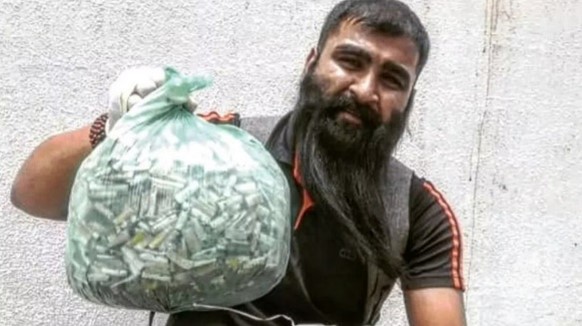
About The Initiative
- This is the first environmental movement against cigarette butt pollution, which began in Kolkata with great success.
- They ran campaigns in Delhi, Bengaluru, and Mumbai, collecting cigarette butts, recycling them, and spreading awareness.
- Cigarette butts are made of cellulose acetate, which is environmentally damaging. It also contains 7,000 hazardous compounds that are harmful to both aquatic and terrestrial creatures.
- Buttrush now has 288 volunteers from nine states who have travelled over 3000 kilometres. They have gathered approximately 3,00,200 cigarette butts so far.
- Rather than simply collecting the waste, Buttrush plans to travel across India to collect data, conduct research, and develop a sustainable methodology to combat pollution at its source.
- They also intend to develop a blueprint that governments might use to address this issue.
Quote: “Cigarette butts are the most discarded waste item worldwide & are also the most common plastic litter on beaches, making marine ecosystems more susceptible to microplastic leakages.”- UNEP
Source:
Share the article
Get Latest Updates on Offers, Event dates, and free Mentorship sessions.

Get in touch with our Expert Academic Counsellors 👋
FAQs
UPSC Daily Current Affairs focuses on learning current events on a daily basis. An aspirant needs to study regular and updated information about current events, news, and relevant topics that are important for UPSC aspirants. It covers national and international affairs, government policies, socio-economic issues, science and technology advancements, and more.
UPSC Daily Current Affairs provides aspirants with a concise and comprehensive overview of the latest happenings and developments across various fields. It helps aspirants stay updated with current affairs and provides them with valuable insights and analysis, which are essential for answering questions in the UPSC examinations. It enhances their knowledge, analytical skills, and ability to connect current affairs with the UPSC syllabus.
UPSC Daily Current Affairs covers a wide range of topics, including politics, economics, science and technology, environment, social issues, governance, international relations, and more. It offers news summaries, in-depth analyses, editorials, opinion pieces, and relevant study materials. It also provides practice questions and quizzes to help aspirants test their understanding of current affairs.
Edukemy's UPSC Daily Current Affairs can be accessed through:
- UPSC Daily Current Affairs can be accessed through Current Affairs tab at the top of the Main Page of Edukemy.
- Edukemy Mobile app: The Daily Current Affairs can also be access through Edukemy Mobile App.
- Social media: Follow Edukemy’s official social media accounts or pages that provide UPSC Daily Current Affairs updates, including Facebook, Twitter, or Telegram channels.

